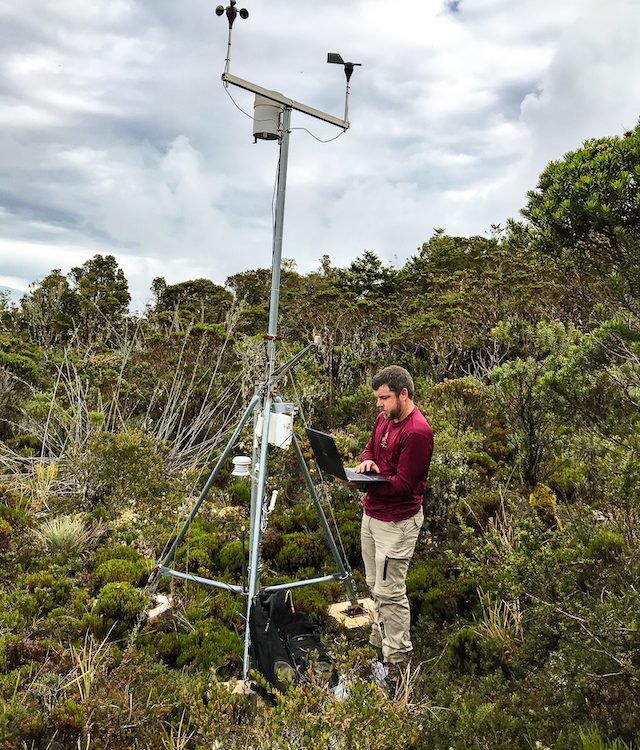
The Climate Here, Weather You Like It Or Not
If you are planning a visit to San Gerardo de Dota, where the QERC is stationed, or to any tropical cloud forest, you might be wondering what the weather is like here, or even what a “cloud forest” is.
The QERC field station has been monitoring and studying atmospheric conditions in the valley using weather stations at different elevations since 2010. If you’re wondering what the weather is like currently, check out the current conditions from the weather station on our building, updated every hour.
You’ll probably notice very quickly that the towering vegetation is draped with living greenness from top to bottom. What makes cloud forest ecology unique is that the lush plant life grows on other plant life – the tree trunks and limbs are coated with epiphytes, which absorb not just rain falling from the skies and dripping from the canopy, but also horizontal precipitation that enshrouds the forest in a misty fog throughout much of the year. Much of this moisture is formed through orographic precipitation, which is moisture drawn out of the humid air molecules as they are heated and rise from the ocean coast, up the slope of the mountain, vaporizing into a low cloud layer above the ground, or peeling off back above the valley to form rainclouds.
This orographic effect of moist rising air becoming precipitation relates to wind patterns in the valley as well. One of the key findings from the six QERCnet weather stations was the notable impact of local conditions that do not correlate with larger-scale synoptic weather patterns. More specifically, the meteorological dynamics of katabatic and anabatic flows cause daily shifts in wind patterns due to the heating and cooling of air molecules along the elevational gradient and valley directed from the Pacific coast toward the southwest to the Talamancan continental divide toward the northeast. Anabatic flows occur in the early morning, around 9am, when the air is heated by the sun and begins to rise, flowing up the valley; katabatic flows begin in the evening around 6pm, when the air is cooled and sinks, changing the direction of the wind flow down the valley toward the coast. This shifting wind direction dynamic runs independently of larger-scale synoptic patterns blowing southeasterly winds.
If you’re interested in the climate where we live and conduct research, that is a much more interesting question with far more detail. Studying climate involves learning about atmospheric conditions such as temperature, humidity, precipitation, and wind over the course of time. Our weather station network, for example, can tell us how weather patterns vary across the span of a year and also across multiple years, which helps us understand how weather patterns are changing and adapting.
